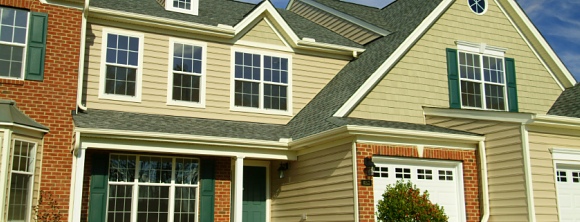Benefits of Replacement Windows

A replacement window is a window that is installed in an existing window opening. Replacement windows take the place of existing windows when they have become deteriorated, drafty or non-functional. In addition, because of advances in window technology, new replacement windows may greatly decrease energy loss and outside noise compared to older windows.
Replacement windows are available in several materials including wood, fiberglass, aluminum-clad wood, vinyl-clad wood, vinyl, glass blocks and other composite materials. The most common materials for new windows are PVC-u and wood.
Replacement windows can increase resale value and energy efficiency. Several types of typical windows are listed and discussed here.
Wood windows were used from the early 1900s to the present but became less of a mainstay of the industry in the 1960s. They are prevalent in the Northern United States. Steel and aluminum casements and Steel Vertical Operators were used from the 1950s through the 1960s. Aluminum windows were used in the 1960s through the present. Vinyl windows were established in the 1970s through the present. The last decade has also seen the admission of composite materials such as fiberglass and vinyl-wood-polymer type products.
Wood “drop-in” replacement windows and vinyl windows are designed to sit in place of the existing sashes and are constructed at 3 1/4″ thickness in most cases. These type windows sit in the opening where the top and bottom sash originally moved in their respective wooden “tracks” The stop between the two sashes must also be removed in this type of refurbishment or retro fit installation. It requires minimal movement of existing trims both inside and out.
The alternative is to replace the entire wood window including jambs. This requires the reworking of interior and exterior wood trim to accommodate the size of the modern wood window. Modern wood windows are available in with 4 9/16″ jambs as a standard feature but can be equipped with “jamb extensions” to extend to 5 1/4″ or 6 9/16″. This is to accommodate the wall thickness as needed.
Modern windows have two or more layers of glass. In the United States, the Energy Code sets certain standards for performance of products installed in homes. These codes now require Low – E Glass in all residential homes.
Low-E is a film that is several layers of metal poured microscopically thin over the surface of newly poured glass. This heat reflective film is transparent but can be darker or lighter depending on the type and manufacturer. This data is rated in Visible Light Transmission. Darker glass with heavier Low – E will have less VT. The NFRC rates most energy star rated window manufacturers.
Low-E glass is up to four times more efficient than clear glass.
Other options include triple-glazing (a third pane of glass), higher quality spacers between the panes, which reduce the failure rate and conduction that allows seal failure. This creates “fogging” or condensation to form between the panes. Modern windows also have optional gases between the panes that have higher insulative qualities than air, such as argon or krypton gases.
“Double-hung” windows are the most common traditional window. They have an upper sash and a lower sash, both of which slide up and down in the window opening. “Single-hung” windows operate the same as “double-hung” windows, but their upper sash is fixed in place. By virtue of being stationary and permanently secured, single-hungs are often more energy efficient that double-hung windows depending on the type and style.
Most vertical operators (single- and double-hungs) now feature “tilt-in” sashes for cleaning of the exterior surfaces. The industry moved towards this approach for service and replacement reasons as well as accessibility to the exterior from the inside of the home.
Casement windows are hinged on one side and are typically operated using an interior hand crank. Awning and Basement windows hinge on top and bottom respectively.
Sliding windows, or “sliders”, are sometimes used in openings that are wider than they are tall.
Non-operable or “fixed” windows also called “picture windows” are common in larger openings.
Retrofit replacement windows are custom manufactured to fit finished openings in sizes down to 1/8″ or 1/4″ in most cases. Builders-grade windows are constructed in specific sizes depending on the manufacturer. Wood windows also have “Standard Sizes” that determine the installation and application. Custom-sized wood windows are a rarity but are the most expensive of modern window products.
In 2009, the United States Federal Government passed a stimulus package allowing a 30% tax credit, with a $1500 cap, on purchases up to $5000 for qualifying energy saving products purchased in 2009 and 2010. This includes insulation, radiant barrier, air conditioning upgrades and most energy-efficient replacement windows and doors.




 Looking for pricing or additional information on our Replacement Window and/or Door Installation, Siding, Dry Rot Repair or other remodeling and construction services? Please call us right now or fill out the form.
Looking for pricing or additional information on our Replacement Window and/or Door Installation, Siding, Dry Rot Repair or other remodeling and construction services? Please call us right now or fill out the form. "We want to say Thank You so much for the windows and for the work it took to install them..."
"We want to say Thank You so much for the windows and for the work it took to install them..." 
No comments yet. You should be kind and add one!
Leave your comments
You must be logged in to post a comment.